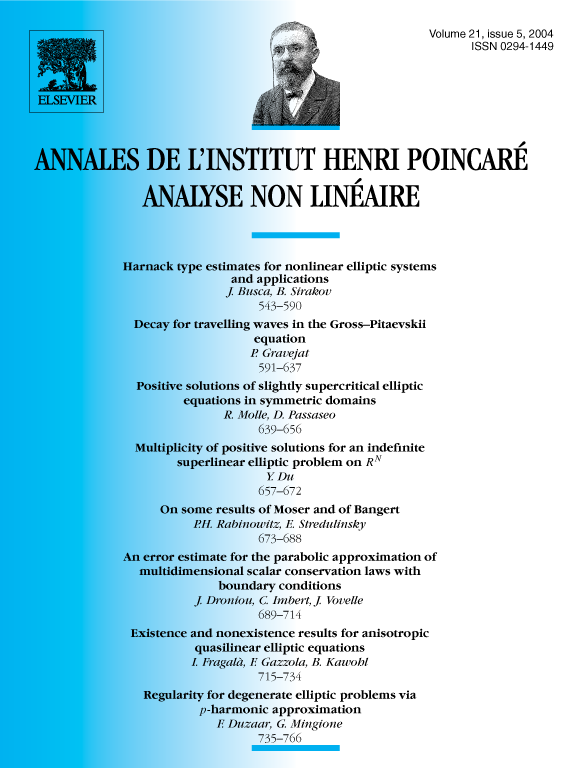Regularity for degenerate elliptic problems via p-harmonic approximation
Frank Duzaar
Mathematisches Institut der Friedrich-Alexander-Universität zu Nürnberg-Erlangen, Bismarckstr. 1 1/2, 91054 Erlangen, GermanyGiuseppe Mingione
Dipartimento di Matematica, Università di Parma, Via D’Azeglio 85/A, 43100 Parma, Italy

Abstract
We introduce a new method to prove regularity of solutions to certain degenerate elliptic problems. The method is based on the -harmonic approximation lemma, recently proved by the authors in [F. Duzaar, G. Mingione, The -harmonic approximation and the regularity of -harmonic maps, Calc. Var., 2004, in press], that allows to approximate functions with -harmonic functions in the same way as the classical harmonic approximation lemma (going back to De Giorgi) does via harmonic functions. The method presented here also bypasses certain difficulties arising when treating some degenerate and singular problems with a weak structure, such as degenerate and singular quasiconvex integrals, and provides transparent and elementary proofs.
Résumé
Nous introduisons une nouvelle méthode pour prouver la régularité des solutions de certains problèmes elliptiques dégénérés. La méthode se base sur le lemme d’approximation -harmonique (prouvé récemment par les auteurs dans [F. Duzaar, G. Mingione, The -harmonic approximation and the regularity of -harmonic maps, Preprint Dip. Mat. Univ. Parma, 2002] qui permet d’approximer des fonctions par des fonctions -harmoniques de la même façon où le lemme d’approximation harmonique classique (qui rémonte à De Giorgi) le permettait avec des fonctions harmoniques. Le méthode présentée ici évite aussi des difficultés qui apparaissent dans certains problèmes dégénérés et singuliers avec structure faible, comme des intégrales quasiconvexes dégénérés et singuliers, et fournit des preuves élémentaires et transparentes.
Cite this article
Frank Duzaar, Giuseppe Mingione, Regularity for degenerate elliptic problems via p-harmonic approximation. Ann. Inst. H. Poincaré Anal. Non Linéaire 21 (2004), no. 5, pp. 735–766
DOI 10.1016/J.ANIHPC.2003.09.003